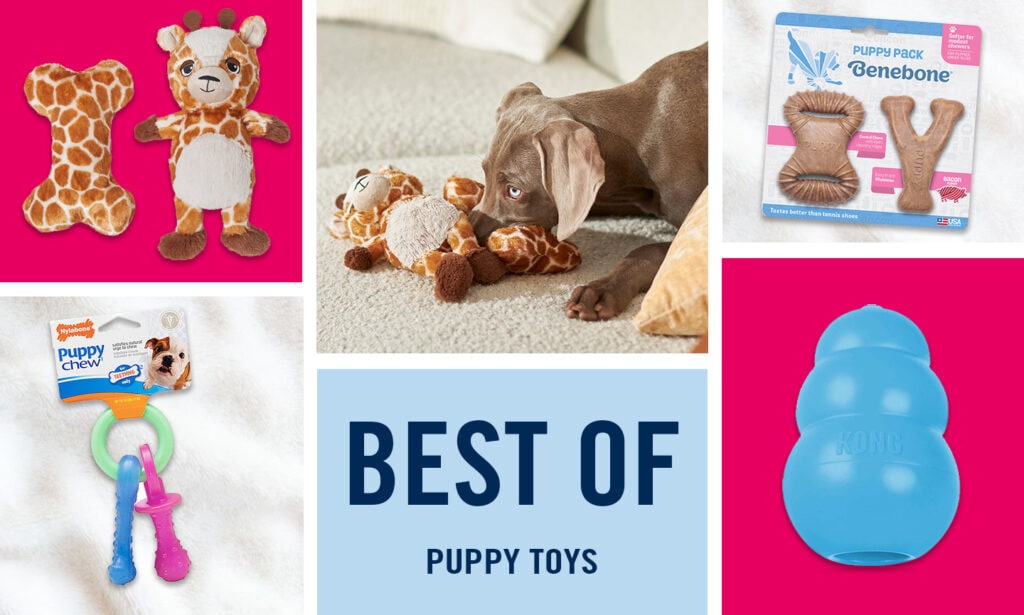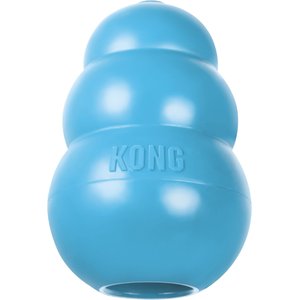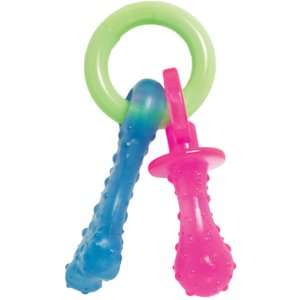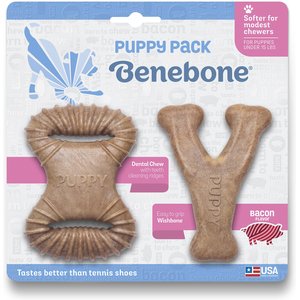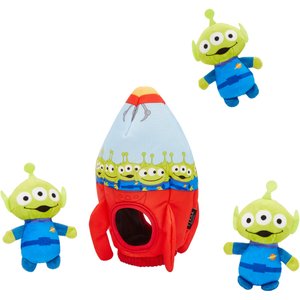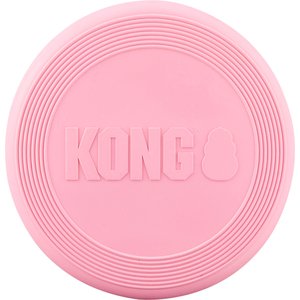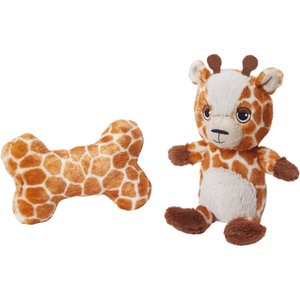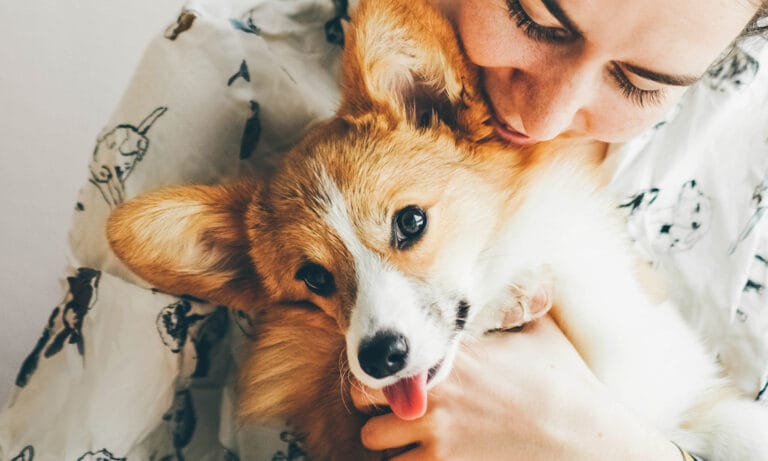Puppies need lots of playtime—and that means lots of toys. Are all dog toys created equally? Not exactly. Toys are essential for your puppy’s development. The right toys manage behavior, increase mental and physical enrichment, ease anxieties and soothe sore gums during teething.
So, how do you know which puppy toys are perfect–and completely safe–for your new best friend? To help you find the best puppy toy for your new fur baby, we spoke to a veterinarian to narrow down what features to focus on when shopping for dog toys. Plus, we’ve rounded up top-selling, top-rated puppy toys for chewers, fetchers and cuddlers. Designed specifically for puppies at different stages and ages, these customer favorites are a great addition to your puppy's toy box.
- 1
- 2
- 3
- 4
- 5
How To Find the Best Toy for Your Puppy
“Toys are critical to a mentally happy dog,” says New Jersey-based veterinarian Dr. Jennifer Feeney, DVM, pet behaviorist and owner of Build a Better Bond Pet Behavior Management. “Your dog’s favorite toy is you, but if you aren’t around, there are lots of things that can keep your pet happy on their own.” Plush, rubber, dental, squeakers—the number of puppy toys on the market is impressively overwhelming. While it’s tempting to gather a collection of the softest and squeakiest toys you can find, buying your new puppy their first toys isn’t so simple if your goal is creating healthy play for both bonding and home alone time.
Before you buy, consider the following:
1. Your Puppy’s Size
If you have a 2-pound Chihuahua puppy, a giant plush toy lobster or a huge ball that they can’t fit in their mouth won’t be useful; your puppy will lose interest quickly. On the other end of the scale, toys that are too small for large dogs are a choking hazard. You’ll want to pick a toy that’s appropriate for their sides: small enough that your puppy can pick them up and move them around, but not too small that they can be swallowed and become a choking hazard, says Dr. Feeney.
2. Your Puppy’s Breed
Certain dog breeds are prone to like certain types of playtime. Herding and working dogs love to run and chase so a fetch toy would be a good pick. Dogs with short, pushed in faces (brachycephalic breeds) like Pugs and Bulldogs are less able to run hard and often prefer to lounge around with a food toy. For mixed breeds and adopted dogs, a pet DNA test kit identifies the dog’s combination of breeds to give insight into your puppy’s tendencies.
3. Your Puppy’s Age
Knowing your puppy’s developmental stage leads you to appropriate toys that your dog will quickly claim as favorites. Teething happens in your puppy’s first year of life, so a teething toy would be ideal for puppies up until they are about 8 months old. Very young puppies (8- to 12- weeks old) sleep for a large portion of the day, so a plush toy to snuggle with would be in order. As your puppy grows, they will be able to run faster, chew harder and play tougher. Enter more durable chew toys and fetch toys. Not certain? Many puppy toys include information on the packaging, such as recommended weight and age. Or, talk to your veterinarian about appropriate toys for your puppy’s age.
4. Your Puppy’s Personality
Observe your dog as they go about their playing, napping and eating-filled day, and after a short time it will become clear what their tendencies are. Knowing whether your puppy prefers to sniff and search out food or run in circles knowing their preferences will help you choose the best toys for your unique pup as they grow.
5. Your Lifestyle
Interactive toys, like flying discs, are great ways to work on your dog’s coordination and to encourage active playtime. But dogs also spend a lot of time alone. Be realistic: If your dog will be spending most of the day by themself while you’re at work, opt for toys that engage your puppy long-term, such as food puzzles, frozen treats for licking and durable chew toys.
7 Best Puppy Toys
To help you choose, we’ve rounded up the best puppy toys as tested and approved by Chewy customers. These top-selling, top-rated puppy toys get two paws up from dog parents like you.
Best Overall Puppy Toy
-
Fave
Fill it with the puppy squeeze then freeze! We have an ongoing rotation of two of these in our freezer at all times.
-
Good for tiny dogs
My dog loves things to be frozen in it, but it’s too small for my 10lb dog and leaks from one side if you don’t plug it up. If you plug it, my dog either can’t reach with her little tongue or can’t get the one side out. Willing to try the next size up, but will skip the spray “cheese”
-
Occupied
My puppy stays occupied for at least 15 minutes or more. Buying another one so we always have one ready
Best Puppy Teething Toy
-
My shark puppy loves it
We have a German Shepherd puppy that is 12 weeks old. He is teething and this toy has helped tremendously with the teething.
-
All Time Favorite
My last three Boston "Terrors" an our newly acquired French Bulldog love this chew toy. No matter how old or how young the toy is each dog's favorite
-
Great chewing toy!
I bought my 1 year old Maltese a bunch of toys for her excessive biting/chewing and she loves this toy! She uses this every day for periods of times and it’s still holding up really well. And it’s super cute! We love it.
Best Chew Toy for Puppies
-
Puppies gave 2 paws up
I recently rescued 2 puppies who were showered with toys when we welcomed them to the family but these bones are by far their favorite. The puppies have spoken!
-
Hardy toy!
We have a 12 week old lab puppy! These things are his FAVORITE!! Highly recommend for heavy chewers and puppies!!
-
Benebone is the best
My two dogs just love these. I keep them everywhere. They even bring them to bed with me. I get the puppy version the small was too big for them . My dogs are 8 and 14 pounds.
Best Puppy Heartbeat Toy
-
Snuggle puppy helps my 5 year old dog.
The snuggle puppy has helped my sweet dog settle during rain and storms. For it to help her warms my heart!! Great product!!
-
Snuggle Puppy is going strong 4 months in
Got this for little lab pup when I had to go to work and to help her acclimate to being away from her litter. Now she is settled in and I don't use the heartbeat thing anymore, but she still loves snuggle puppy and does not try to tear him apart. This is not true for most of her other plush toys (although the red Clifford is also still intact). She cuddles with him in her crate and carries him around for playtime. I really think it helped, we don't have separation or anxiety issues.
-
Made well!
Nicely made and plush with soft fur that my puppy loves. He cuddles with his new friend and plays with him at times too!
Best Puppy Puzzle Toy
-
How inventive!
This pup lives this toy! Sometimes he shakes the whole spaceship to shake out the aliens. The aliens are perfect for indoor fetch.
-
Durable and fun
My wild puppy loves this and has yet to tear it apart. It keeps him entertained for a whole 20 minutes, which is like 2 hours in puppy time.
-
Super cute!
Cute fun puzzle toy. My dogs like getting the little aliens out of their spaceship - can also put treats inside for more of an incentive for them to dig in!
Best Puppy Fetch Toy
-
Durable
Honey is a frisbee fanatic and the frisbee is her best friend (besides me) doesn’t like to give up the frisbee
-
Even my tiny puppy can carry it!
I bought this for my 11 week old, 5.25 pound puppy. She LOVES it. I’m impressed that she carries it around. The material is easy enough to clean and we keep it outside.
-
Soft Rubber and great toy.
My dog is getting old and this is softer and easier to grab than the regular Kong flyer. He loves it.
Best Plush Puppy Toy
-
Miley loves it
Miley has two favorite toys and this giraffe is one of them. We have only had him 3 months and this little giraffe looks well used already.
-
Durable!
My dogs have been rough on these toys and the fabric has held up well - no tears and no ripped seams.
-
Chiweenies love it
My two chiweenies love this toy set. It’s super soft and they haven’t tore it up yet. A definite favorite for them.
Safety Tips for Puppy Playtime
Swallowing parts of or whole toys (if too small for your large puppy) is the main safety concern when introducing a new toy. Follow these tips for fun and safe playing:
- Make sure the puppy toy is the right size. Some dog toys come in a range of sizes, and others are designed specifically for small-, medium- or large-breed dogs. Dr. Feeny says to make sure it’s big enough so that they can’t swallow it but not too big that they can’t actually play with it.
- Keep durability in mind when choosing a toy. This is especially important if you have aggressive chewers. “Dogs who love to chew can chew for hours, so make sure you have a strong product that can withstand that kind of activity,” Dr. Feeny says. But you don’t want it to be too tough. Some bones are so hard they can break your dog’s teeth, says Dr. Feeney. They should be soft enough that you can make an indent with your thumbnail.
- Always monitor your puppy during playtime. Never leave your dog unsupervised with toys, especially if they are prone to playing rough or destroying them.
- Keep tabs on the wear and tear. Visually inspect even the most durable toys before play to make sure there are no loose bits that can fall off, no rough or frayed edges or stuffing coming out that could be swallowed and no sharp edges.
Best Puppy Toys FAQ
Q: What are the safest puppy toys?
A: Safe toys for puppies are made with nontoxic ingredients (like natural rubber), appropriately sized and can’t be swallowed whole or ripped apart (stuffing, squeakers and bells can be a choking hazard). Always monitor your puppy whenever they are playing with toys.
Q: What are safe puppy chew toys?
A: Puppy teeth are more sensitive than adult teeth and can chip if the toy material is too hard. Rubber toys and nylon bones are safer than antler and beef bones, says Dr. Feeney. Chew toys should be durable, but soft enough that you can make an indent with your thumbnail, and made with natural, non-toxic ingredients.
Q: What toys can keep my puppy busy?
A: Think mental stimulation. Toys that involve searching for food or solving a puzzle to find food can keep dogs occupied for extended periods of time. Dog Puzzle toys or interactive dog toys range in levels and difficulty, starting with a snuffle mat for hiding kibble and progressing to a system where dogs push a lever and open a latch to get a treat. To get your puppy started, fill a KONG Classic toy with dog-safe peanut butter for them to lick out.
Q: What toys are best for an 8-week-old puppy?
A: Young puppies benefit from teething toys, which should be durable, but not too hard. Some chew toys can be stored in the freezer to numb sore gums, relieving pain. Eight weeks is typically the youngest age a puppy will leave their littermates to join their new home, so behaviorally, it’s go-time for teaching what’s right and wrong. Soft toys and stuffed toys that mimic body heat or their mama’s heartbeat ease anxieties during crate training or home alone time.
How We Chose These Products
Having the right toys for your new puppy makes those first few months of pet parenting less stressful and a lot more fun. We delved through Chewy’s best-selling puppy toys to bring you only the top-rated (at least a 4-star rating) products. These puppy toys are pet-parent approved by hundreds of Chewy customers so you can feel confident in your purchase.
Talk to Your Veterinarian
You and your puppy are just getting to know each other, so if you have any health or dental concerns, check in with your veterinarian for safe toy suggestions based on your puppy’s age, breed and personality.
Next Steps: What More to Expect With Puppy
Now that you’ve conquered playtime with the best puppy toys, find out what else to expect during your puppy’s first year so you can keep your new furry friend happy and healthy .
Expert input provided by Dr. Jennifer Feeney, DVM, UW-AAB, Elite FFCP, LSHC-S, CVF, veterinarian, pet behaviorist and owner of Build A Better Bond Pet Behavior Management in Bridgewater, New Jersey.
See more Chewy dog parent faves:
Share:
